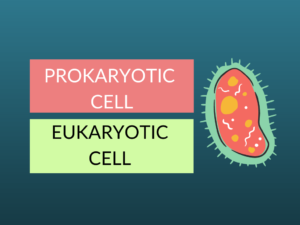Difference between Transfection and Transduction
Transfection and transduction are two vital techniques in molecular biology that enable the introduction of foreign genetic material into living cells. However, these techniques differ in their methodology and applications. This article explores the differences between transfection and transduction, along with their respective uses and examples.
What is Transfection?
Transfection refers to the process of introducing foreign nucleic acids, such as DNA or RNA, into eukaryotic cells. It involves the deliberate alteration of the genetic makeup of the target cell by delivering the desired genetic material.
Examples of Transfection
Some common examples of transfection techniques include:
- Calcium Phosphate Transfection
- Lipofection
- Electroporation
- Gene gun
- Viral vectors
Uses of Transfection
Transfection has a wide range of applications in various fields, including:
- Gene expression studies
- Gene therapy
- Drug target identification
- Protein production
- Cellular reprogramming
What is Transduction?
Transduction is a process that involves the transfer of genetic material, typically DNA, from one bacterium to another by a bacteriophage (virus that infects bacteria). It occurs naturally when a bacteriophage infects a bacterial cell and injects its genetic material into the host cell.
Examples of Transduction
Some examples of transduction include:
- Generalized transduction
- Specialized transduction
Uses of Transduction
Transduction is primarily used in bacterial genetics and research for various purposes, such as:
- Gene transfer between bacterial cells
- Identification of genes responsible for specific functions
- Studying bacterial evolution
Differences between Transfection and Transduction
| Difference Area | Transfection | Transduction |
|---|---|---|
| Introduction of Genetic Material | Foreign nucleic acids (DNA or RNA) are introduced into eukaryotic cells. | Genetic material (DNA) is transferred from one bacterium to another using a bacteriophage. |
| Cellular Target | Eukaryotic cells | Bacterial cells |
| Vectors | Non-viral vectors (e.g., liposomes, electroporation) and viral vectors (e.g., adenovirus, lentivirus) | Bacteriophages act as vectors |
| Mechanism | Direct delivery of genetic material into cells | Infection of bacterial cells by the bacteriophage, which injects the genetic material |
| Transfer Efficiency | Relatively low efficiency | Efficient transfer of genetic material between bacterial cells |
| Applications | Gene expression studies, gene therapy, drug target identification, protein production, cellular reprogramming | Bacterial genetics, identification of genes responsible for specific functions, studying bacterial evolution |
| Suitable Recipient | Primarily eukaryotic cells | Bacterial cells |
| Host Effects | May result in cellular stress and immune response | The bacterial host can exhibit altered phenotypes |
| Modified Genetic Material | Possibility to introduce the desired genetic material | Introduction of bacterial genes or fragments |
| Transfer Mechanism | Physical or chemical methods | Viral infection |
Conclusion:
In summary, transfection and transduction are two distinct techniques used in molecular biology for introducing foreign genetic material into cells. Transfection is primarily used in eukaryotic cells, while transduction occurs between bacterial cells using bacteriophages. They differ in terms of their mechanisms, vectors, efficiency, applications, and suitability for specific cellular targets.
People Also Ask:
- What are the advantages of transfection over transduction?
- Can transduction be used in gene therapy?
- Is transfection more efficient than transduction?
- Are liposomes used in transduction?
- Is transduction a natural process?
Transfection allows for the introduction of genetic material into eukaryotic cells, while transduction is limited to bacterial cells.
No, transduction is not commonly used in gene therapy, as it primarily occurs in bacterial cells.
No, transduction is typically more efficient than transfection when transferring genetic material between bacterial cells.
No, liposomes are commonly used in transfection techniques to deliver genetic material into eukaryotic cells.
Yes, transduction occurs naturally when a bacteriophage infects a bacterial cell and transfers its genetic material to the host cell.



